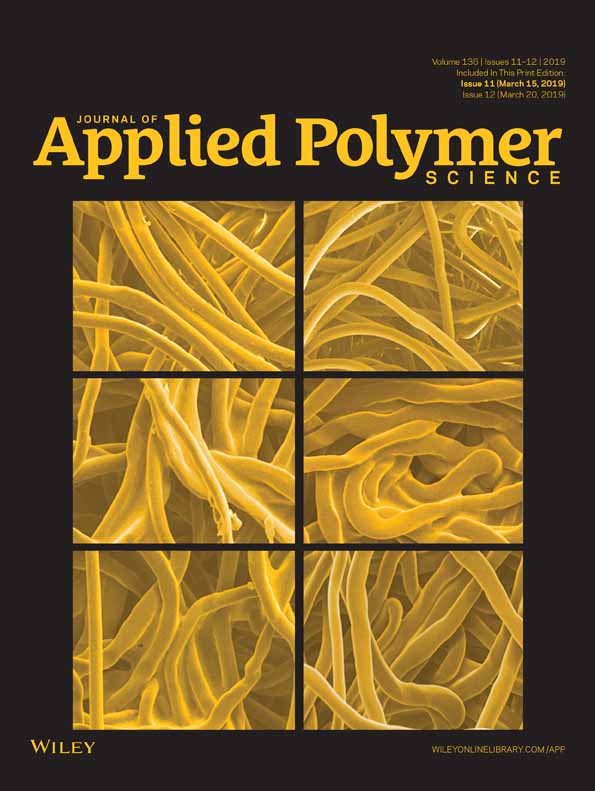Asphalt modified with reactive tri-block polymers obtained by via reversible addition-fragmentation chain transfer polymerization
ABSTRACT
In this work, asphalt modifiers consisting of a series of poly(glycidyl methacrylate-ran-styrene)-block-poly(butyl acrylate)-block-poly(glycidyl methacrylate-ran-styrene) tri-block copolymers (GS-BA-GS) were synthesized via reversible addition-fragmentation chain transfer polymerization. Particular attention is given to the influence of controlled copolymer structures on the physical properties, morphology, thermal stability, and rheological behavior of the asphalt blends. Results show that the degree of asphalt modification is a function of the copolymer structure in relation to the epoxide content in the chain ends of the copolymers. The rheological, thermal, and microstructure analyses reveal that the addition of reactive copolymers increases chemical interactions with the polar fraction of asphalt. Absence of gelation in addition to improvements in viscosity, elasticity, storage stability are observed in the blends with GMA concentrations of 2%–4% with respect to copolymers without functional groups. © 2018 Wiley Periodicals, Inc. J. Appl. Polym. Sci. 2019, 136, 47201.




